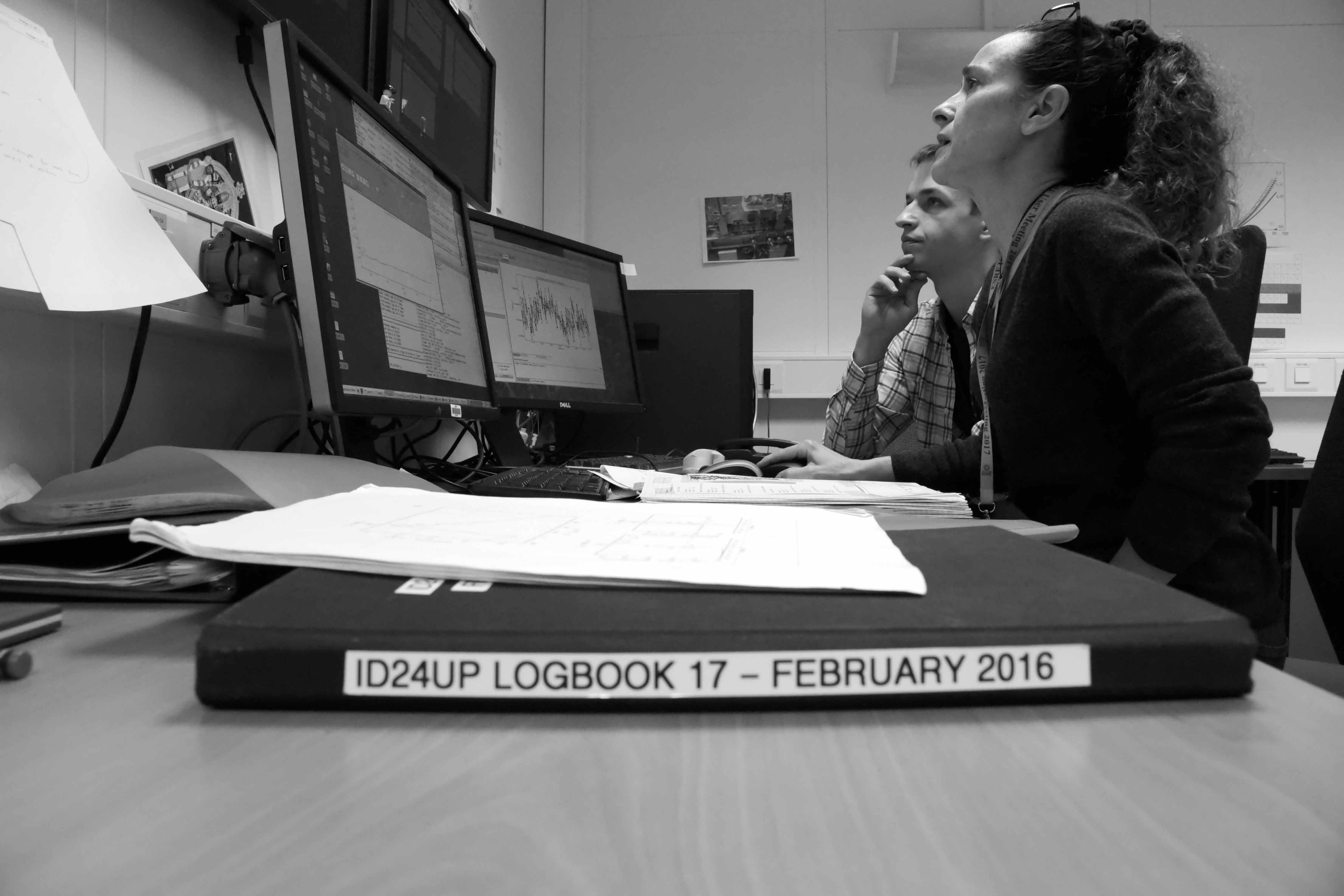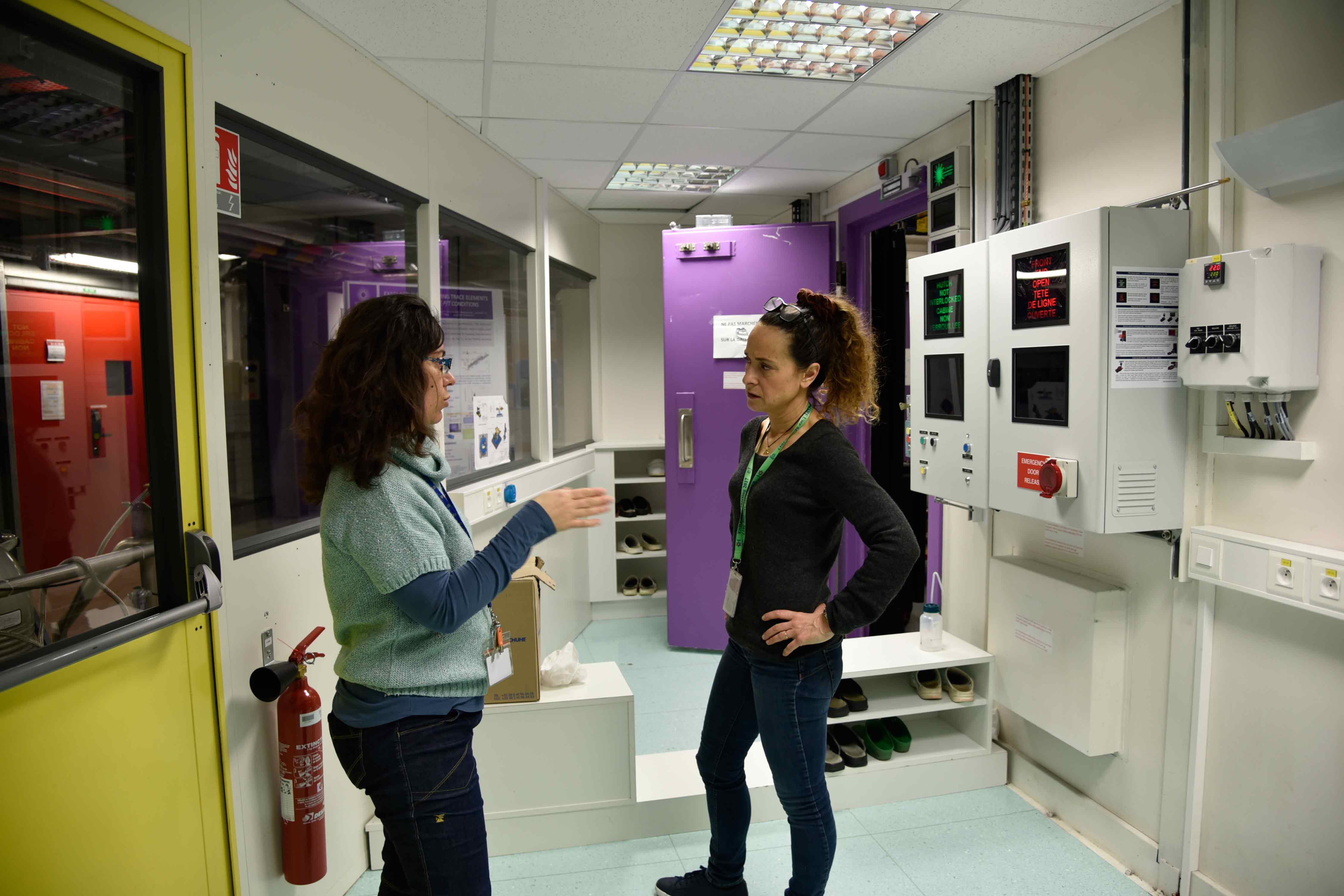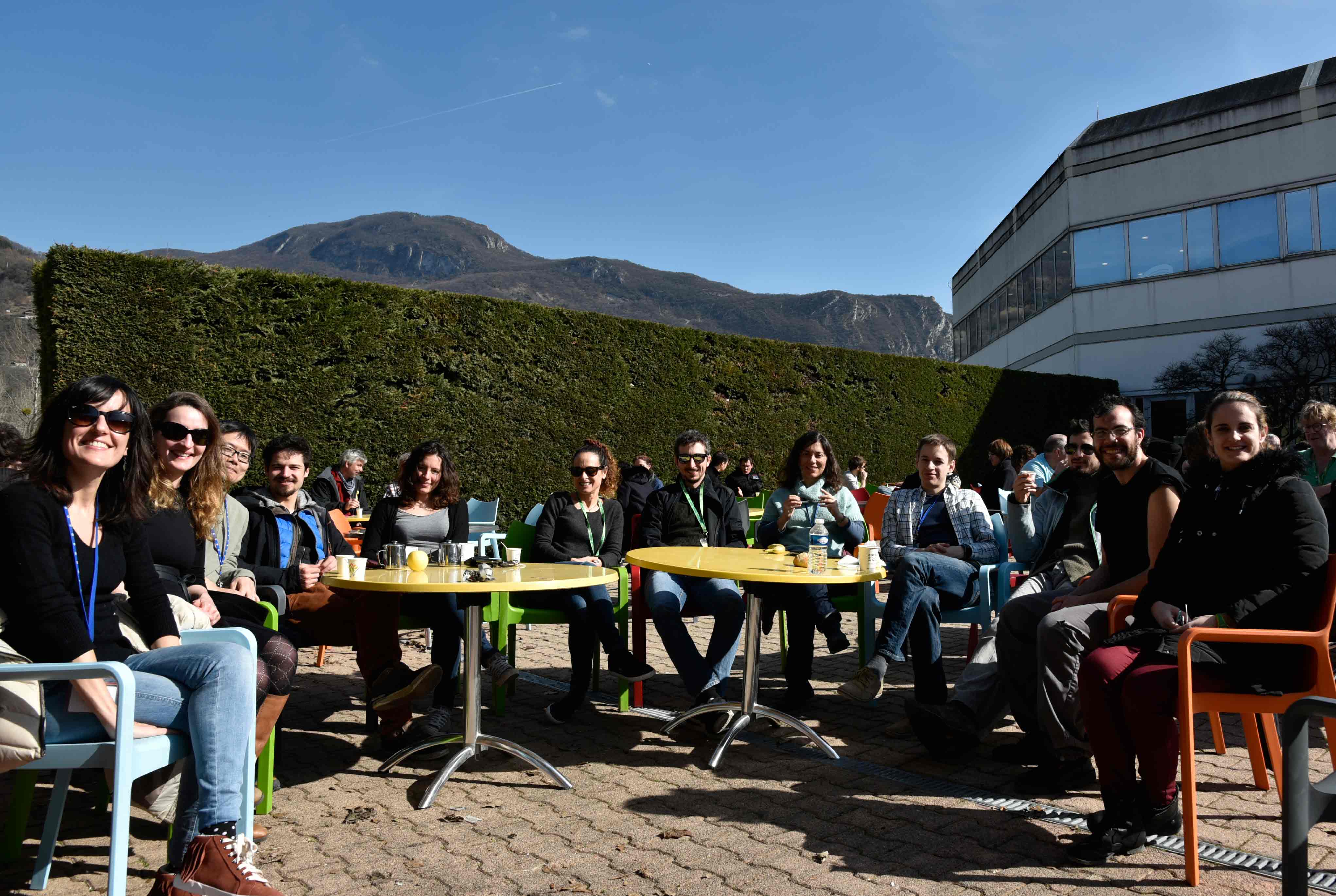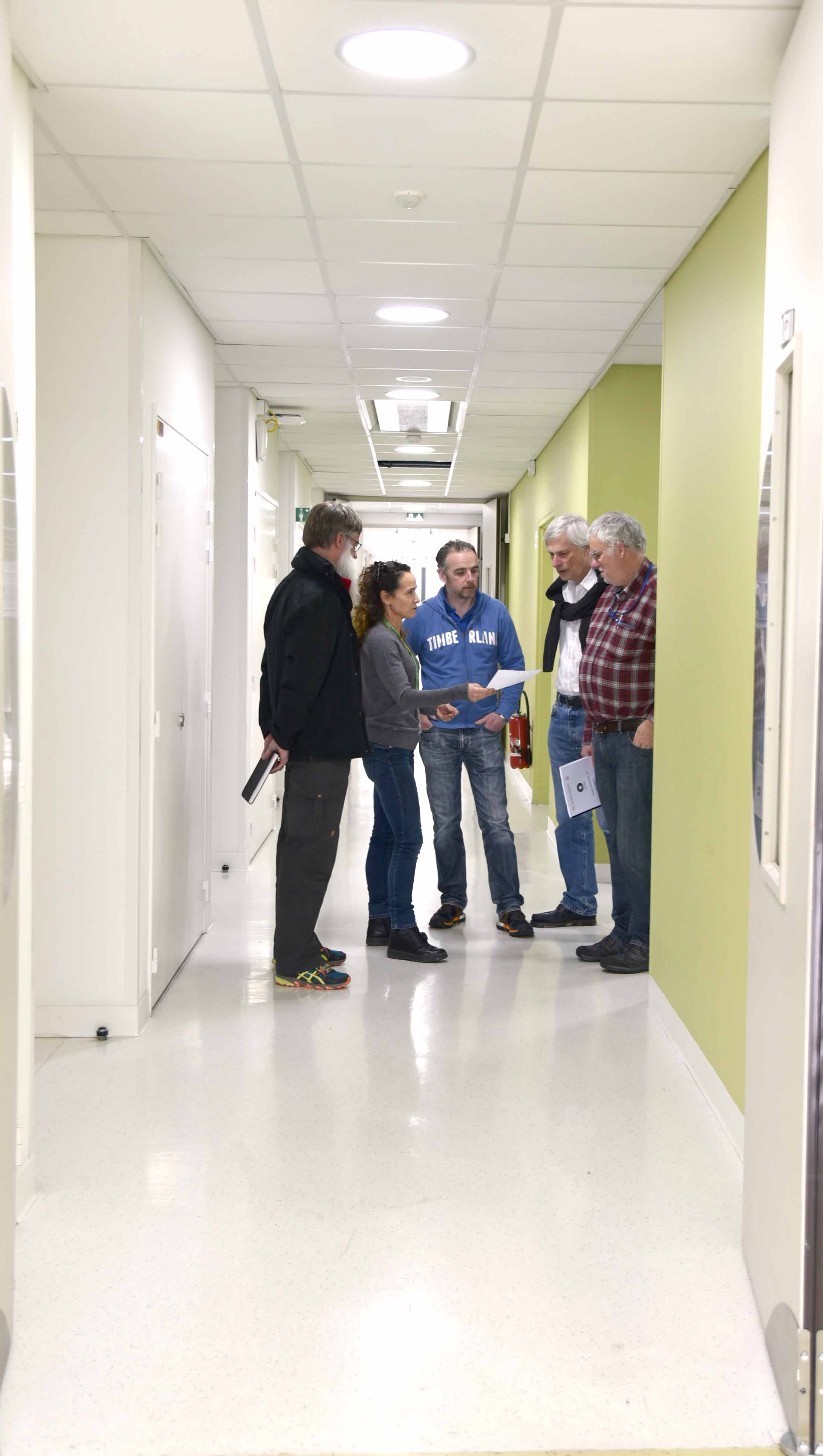- Home
- News
- General News
- A day in the life:...
A day in the life: the physicist who swims to release (high) pressure
08-03-2017
Ever wondered what an ESRF scientist’s or engineer’s life looks like? Are they all day working on their next Eureka moment or do they spend long hours in front of the computer? Do they have a sense of fulfilment? And does being a woman make any difference? The International Women’s Day is celebrated this week, so we have followed four women on their day-to-day routine to give a flavour of their lives.
Sakura Pascarelli has a Japanese name, but she feels very Italian. She was born in Japan and travelled all her childhood to different countries around the world. She feels that this start in life gave her a strength that she sees everyday in herself. Fast-forward several decades later and she is a successful double beamline scientist and head of group at the ESRF. Always with the same strength and no-nonsense approach to life.
Morning
Sakura Pascarelli, head of the group Matter at Extremes and in charge of two beamlines, starts the day dropping her two daughters off to school. They take it in turns with her husband, also a scientist. “We have always assumed 50% of responsibility from the beginning, and this has allowed us to develop our careers at a similar speed”, she says.
ID24. Sakura is spending the morning teaching the new beamline scientist, Kirill Lomachenko, how to align the beamline for experiments. He arrived at the ESRF less than a month ago and he is already getting to grips with the complex functioning of the beamline. Sakura explains slowly, her hands accompanying her speech in an unmistakeable Italian way. Despite always seeming to be on the run, she enjoys taking time to teach her staff. “I´ve been doing this for many years now, I like it a lot, it is a very satisfying part of my job.” She also teaches in the Hercules programme, the international course for users of synchrotron and neutron sources, which she also took as a student back in 1991. “I love being in contact with students: because they come fresh from uni, they come up with extremely interesting questions that make me think”. She has calculated that she has trained 40 people throughout her career.
 |
|
Kirill Lomachenko and Sakura Pascarelli in the control hutch of ID24. |
Midmorning
Sakura heads to a meeting with Ed Mitchell, head of the Business Development Office, in view of tightening relations with industry. Her beamlines offer experiments using the technique of spectroscopy, which allows a wide range of research possibilities. From catalysis for industrial clients (Toyota was a long-standing client for many years) to high pressure, high temperature Earth sciences or material sciences. Her general purpose beamline BM23 is constantly oversubscribed by 400%. “My core business is to keep the EXAFS (Extended X-Ray Absorption Fine Structure) community happy”, she says. “We do this on two levels, with BM23 on one side - a very versatile standard beamline to cover the needs of 90% of the community - and with ID24 on the other - a very innovative and unique beamline worldwide to perform experiments that are not possible elsewhere. Today, we can take a full EXAFS spectrum with a single X-ray pulse”. Compared to the past, this is a thousand times faster. Sakura has dedicated her working life to this technique, and she has no regrets: “I am proud of my career, but I evolved because I had very good people around me, I didn’t do it on my own”, she says.
 |
|
Raffaella Torchio and Sakura Pascarelli on the beamline, discussing about the next experiment. |
Her right-hand man on the beamlines is Olivier Mathon, the Beamline Operation Manager. Both of them have been at the ESRF for a long time, and both of them have permanent contracts. “We are like mum and dad. The gap with the post-docs and students is now quite big, so we feel a bit like we have kids who want to play with the beamlines. Our role is to give them the best conditions to set free their imagination, but also teach them how to tidy up after the party. The great thing is that they have billions of ideas, so they contribute a lot to the advancement of the research possibilities”, she says, laughing.
Lunch
Most of the staff of the two beamlines has lunch together. There are so many of them these days that they have to cram at the coffee table. Sakura says her group has never been so big, reaching 17 people, but that the atmosphere is fantastic. Several nationalities are represented and, what is possibly more striking still today, is that half of the staff are women. “I don’t recruit more women than men, I recruit whoever is the best, but I am very proud of recruiting women”, she says.
 |
Afternoon
More meetings. These are not Sakura’s favourite part of the job, but she acknowledges that it is probably her best contribution to the ESRF right now: “The ESRF needs my experience in a management role. I am 53, I need to leave space for the younger generations to do experiments”.
"I recruit whoever is the best, but I am very proud of recruiting women"
A lot of the meetings she is concerned with now are related to the project of a High Power Laser facility, which, if approved, would come to life when the EBS project comes to completion. “It is a very ambitious project, very risky, which will need manpower to build and to run , as it will allow very complex experiments”, she says. Not impossible, though. It is not the first time that Sakura faces a big challenge: ID24 went through a complete refurbishment 5 years ago. “It was a very stressful time because we had tight deadlines that we needed to meet, but we can now achieve time resolution that we couldn´t have before”, she says.
 |
|
Discussing with some of the beamline responsibles in her group, just before a meeting. |
Evening
Sakura has three pillars in her life, and two of them are outside work. ” My family at home, then comes my family on the beamline, and last but not least, my family at the local swimming club”.
In order to unleash the pressure of work, Sakura tries to swim at least three times a week. I swim because I need it” she says “it releases stress and gives me the energy to always be at 100%”. Every year she qualifies for the French Masters Swimming Championships. “I am happy to win medals for my Club, if we do well maybe one day we’ll get a new pool”. Her collection includes medals on the 100 and 200 Freestyle, 100 and 200 Butterfly and 400 Individual Medley.
After the swimming, and with two teenage girls, she inevitably has to taxi them to different activities. At home, they take it in turns to cook with her husband and her daughters. She speaks with much fondness of them. With two scientists for parents, do they feel any pressure to become scientists themselves? “No, I tell them they are free to choose, they just need to believe in themselves. They need to work hard, but they can do whatever they want. I also tell them that they can have the same salary as men. And that they need to have financial independence, so that if their couples don’t work out, they are free”.
Text and photos by Montserrat Capellas Espuny



